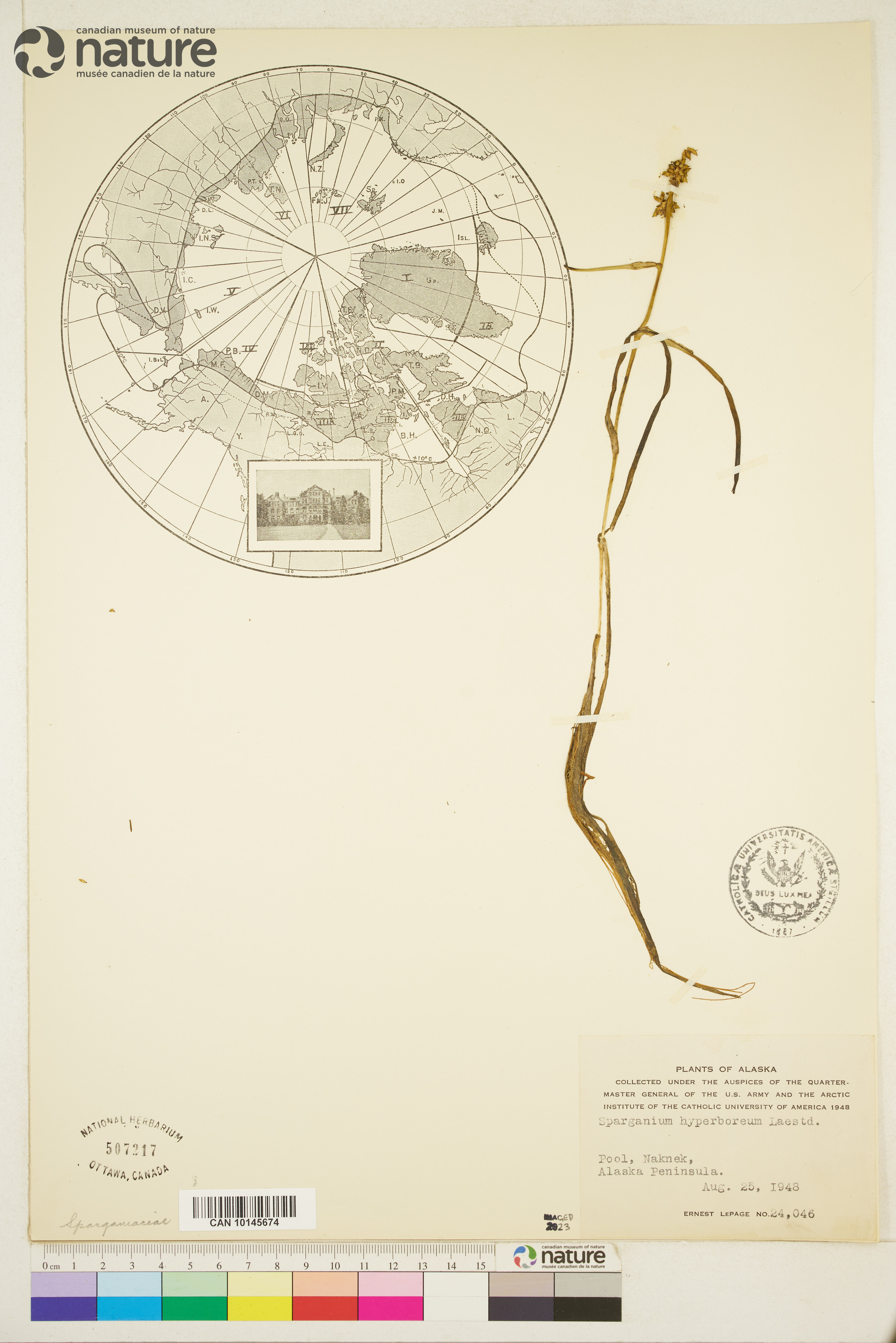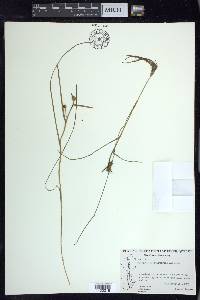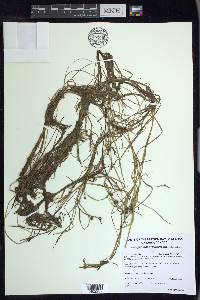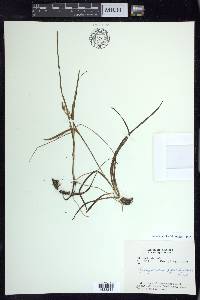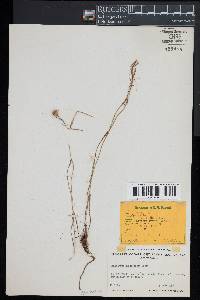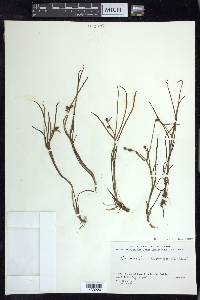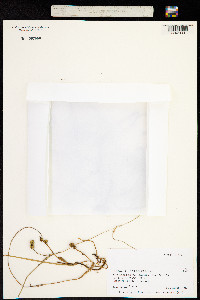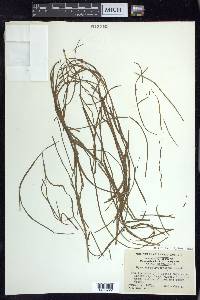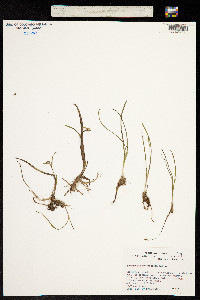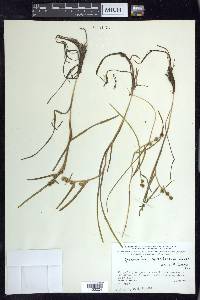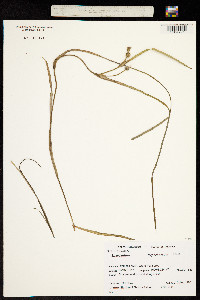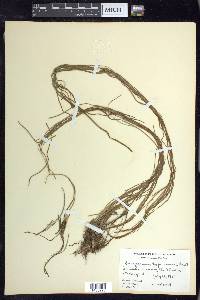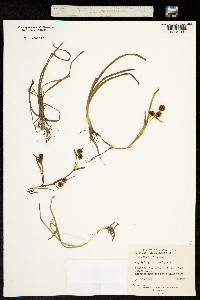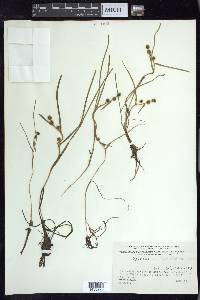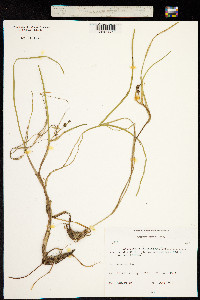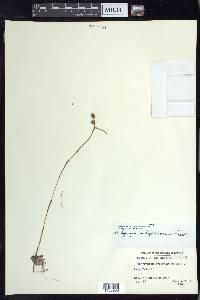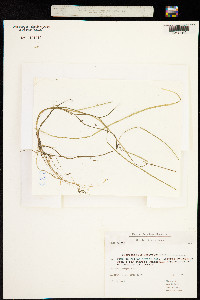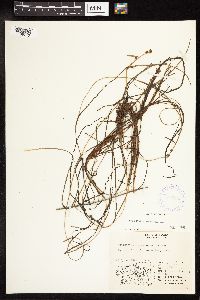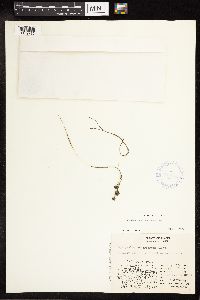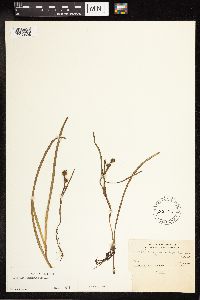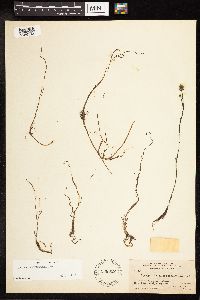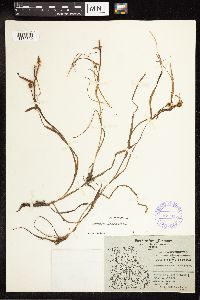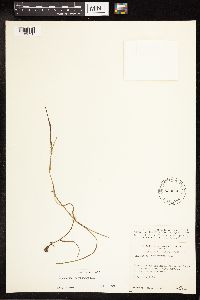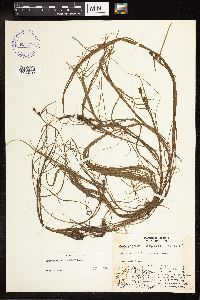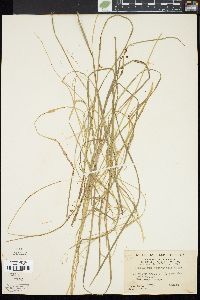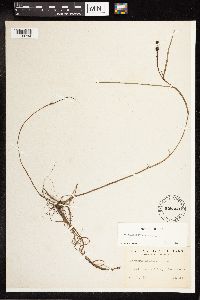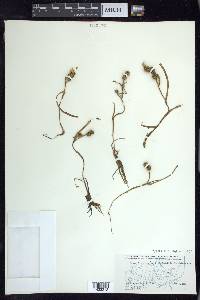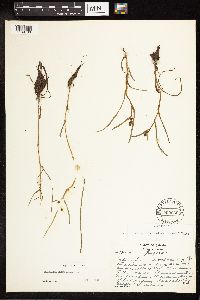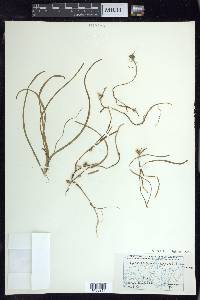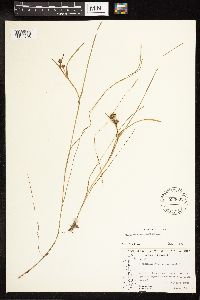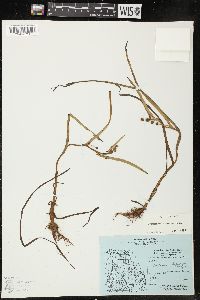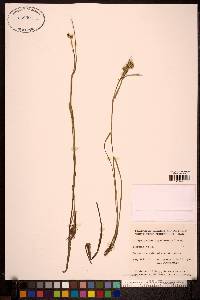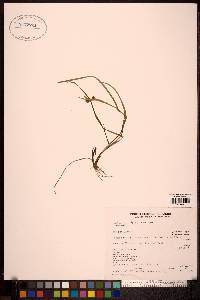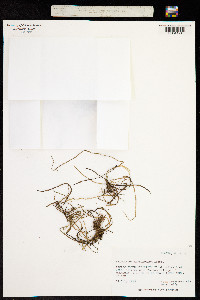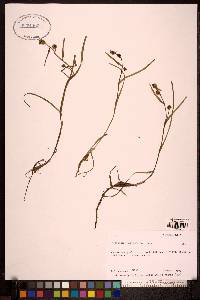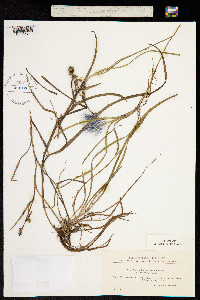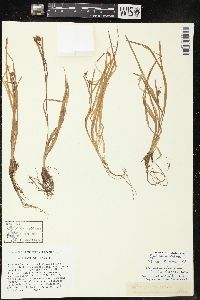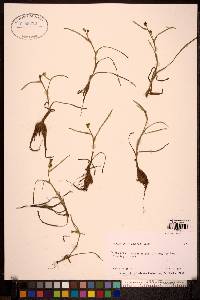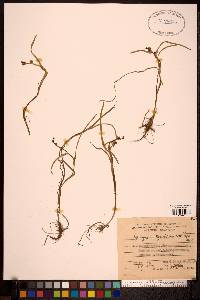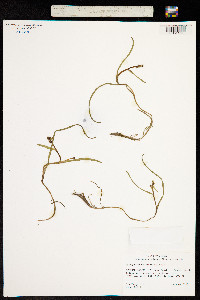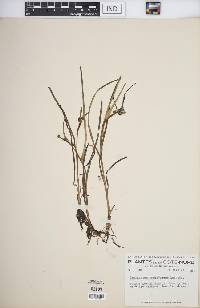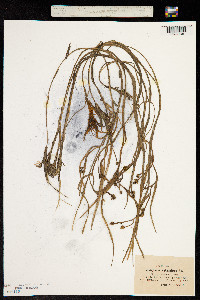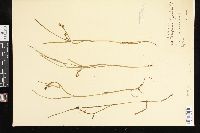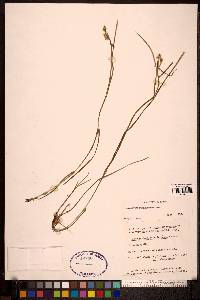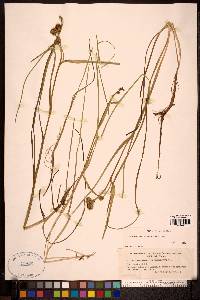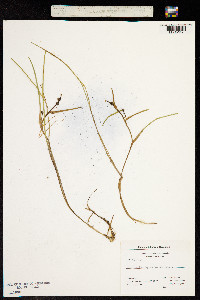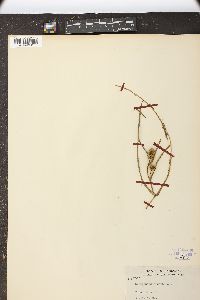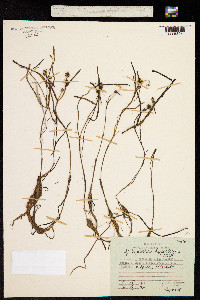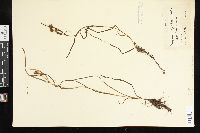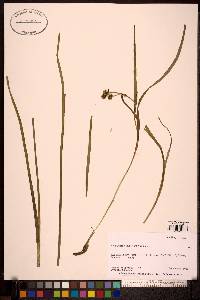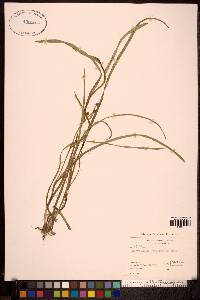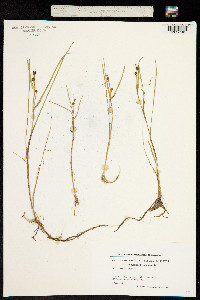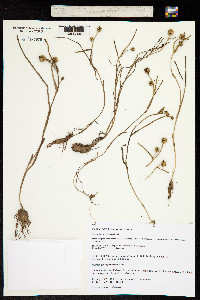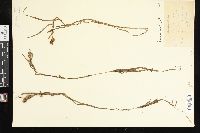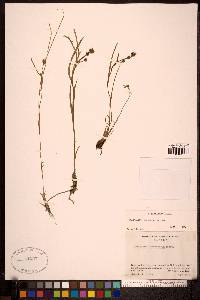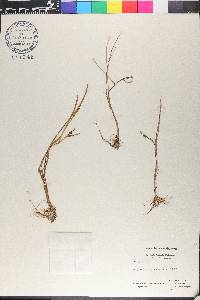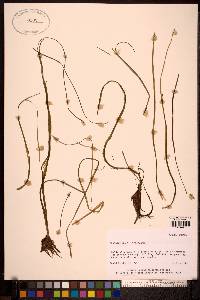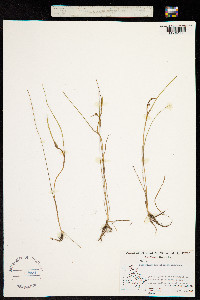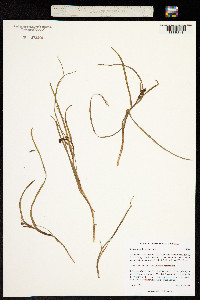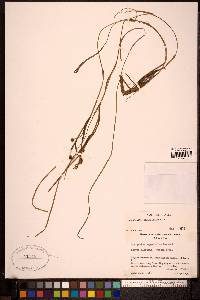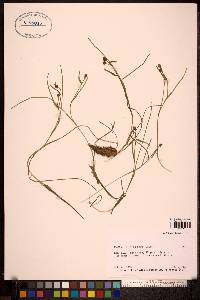Sparganium hyperboreum
|
|
|
|
Family: Typhaceae
Northern Burr-Reed
[Sparganium submuticum (Hartm.) Neuman, moreSparganium williamsii] |
Plants slender, grasslike, to 0.8 m; leaves and inflorescences usually floating. Leaves limp, unkeeled, flat, 0.1--0.4(--0.8) m 1--5 mm. Inflorescences: rachis unbranched, flexuous; bracts ascending, lower bracts slightly inflated near base; pistillate heads 1--4, axillary, contiguous, sessile, or most proximal peduncled and supra-axillary, 0.5--1.4 cm diam. in fruit; staminate heads 1(--2), terminal, contiguous or not with distalmost pistillate head. Flowers: tepals without subapical dark spot, erose; stigmas 1, ovate. Fruits brown or yellowish, dull, subsessile, body ellipsoid to obovoid, not faceted, ±more or less constricted at equator, 2--5 1.5--2.5 mm; beak less than 0.5 mm, or absent; tepals attached at base, not reaching equator. Seeds 1. 2n = 30. Flowering summer (Jul--Aug). Cold, quiet, shallow, oligo- to mesotrophic arctic-alpine waters; 0--3000 m; Greenland; St. Pierre and Miquelon; Alta., B.C., Nfld. and Labr., N.W.T., N.S., Nunavut, Ont., P.E.I., Que., Yukon; Alaska; circumboreal. Sparganium hyperboreum is distinguished from other floating-leaved species by its beakless fruits with sessile stigmas. Putative hybrids between Sparganium hyperboreum and S. natans have been found in Manitoba, Newfoundland, Northwest Territories, and Alaska by V. L. Harms (1973), who discussed variation in both species. The hybrids have wider (2--5 mm) leaves, golden-brown fruits with short (1 mm) beaks, and supra-axillary pistillate heads (V. L. Harms 1973; C. D. K. Cook and M. S. Nicholls 1986).
Stems floating, or decumbent and ascending, very slender; lvs thick, flat, 1-4 mm wide, much elongate when floating; pistillate heads 2-4, the lower 1 or 2 supra-axillary, sometimes short-peduncled, 1 cm thick when ripe; tep narrowly spatulate, scarcely reaching the middle of the fr; achenes sessile or nearly so, dark yellow, the body ellipsoid, 4 mm, scarcely constricted, acute at both ends, tipped with the persistent, dark, papilliform stigma less than 0.5 mm; staminate head 1, closely adjacent to the pistillate; anthers oblong, 0.4-0.8 mm; 2n=30. Cold quiet water; circumboreal, s. to N.S. Gleason, Henry A. & Cronquist, Arthur J. 1991. Manual of vascular plants of northeastern United States and adjacent Canada. lxxv + 910 pp. ©The New York Botanical Garden. All rights reserved. Used by permission. |

